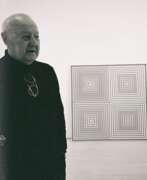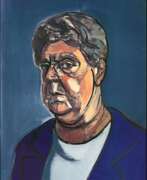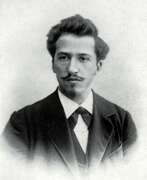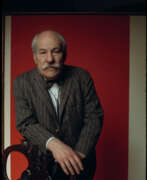America Abstract art


Pacita Abad was a renowned Filipino artist, celebrated for her vibrant and colorful artwork that showcased her deep engagement with global cultures and social issues. Born in 1946 in Batanes, Philippines, into a politically active family, Abad's life took a significant turn when she decided to abandon her law studies in favor of art, influenced by her interactions and travels across the globe. This decision led her to explore various art forms and techniques, including trapunto painting—a method where canvases are stitched and padded to create a three-dimensional effect.
Abad's art was profoundly influenced by her extensive travels with her husband, Jack Garrity, through more than 60 countries, where she not only collected textiles but also immersed herself in local cultures. This exposure is vividly reflected in her works, which often incorporate traditional fabrics and objects, such as beads and shells, integrating them into her colorful abstract and figurative paintings.
Throughout her career, Abad's works were displayed in over 200 museums and galleries worldwide, including prestigious venues like Tate Modern and the Museum of Modern Art (MoMA) PS1. Her work not only celebrates the visual and cultural diversity she encountered but also addresses global and humanitarian issues, such as the plight of refugees, which she depicted through intimate and powerful portraits of women and children.
Pacita Abad's legacy continues to inspire and influence the art world, highlighting her role as an "ambassador of colors" whose works helped to "make the world smile" with their exuberance and vibrancy. If you're interested in learning more about her life and work, consider signing up for updates on exhibitions and sales related to her art. This will keep you informed about opportunities to engage with and perhaps collect pieces from the oeuvre of this groundbreaking artist.


Richard Joseph Anuszkiewicz was a prominent American artist celebrated for his foundational contributions to the Op Art movement. Born in Erie, Pennsylvania, to Polish immigrant parents, Anuszkiewicz's early talent in art earned him scholarships, leading to his studies at the Cleveland Institute of Art and later, the Yale University School of Art and Architecture under Josef Albers. Albers, a pivotal figure in his career, inspired Anuszkiewicz to explore the intricacies of color and geometric forms, steering him away from realism towards a more abstract and mathematical approach to art.
Anuszkiewicz gained prominence in the 1960s, notably through his participation in the landmark exhibition "The Responsive Eye" at MoMA, which played a crucial role in propelling Op Art into mainstream recognition. His works, characterized by vibrant colors and geometric patterns, create illusions of depth and movement, challenging viewers' perceptions and offering a mesmerizing visual experience. His technique was not just about the visual impact; it was a meticulous, mathematical exploration of color and form, aiming to achieve a 'very, very mechanistic geometry' that was nonetheless romantic in its precision and purity.
Throughout his career, Anuszkiewicz's art evolved, yet he remained faithful to his intellectual and analytical approach, focusing on the optical effects of color and shape. His contributions extended beyond painting to include printmaking and sculpture, showcasing his versatility as an artist. Notably, his works are housed in prestigious collections around the world, including the Metropolitan Museum of Art, Museum of Modern Art, and the Whitney Museum of American Art, among others.
For collectors and experts in art and antiques, Anuszkiewicz's work embodies the confluence of scientific precision and artistic expression, offering insights into the profound impact of color and form on human perception. His legacy continues to inspire and challenge the boundaries of visual art.
If you're captivated by the transformative power of Op Art and the pioneering work of Richard Joseph Anuszkiewicz, sign up for updates. Stay informed about new product sales and auction events related to this remarkable artist's oeuvre, enriching your collection with pieces that resonate with history and innovation.


Leland Bell, an American painter born in 1922 and passed away in 1991, is a figure whose artistic journey and output stand as a beacon of individuality and depth in the 20th-century art world. Bell's dedication to painting was profound, shaping a career that remained largely self-taught yet significantly influential. His work, characterized by a passionate engagement with both abstract and figurative painting, represents a unique blend that defied the dominant trends of his time, making him a crucial figure for collectors and art enthusiasts.
Bell's artistic signature is evident in his choice of subjects—still life, portraiture, and figure composition—handled with a distinctive blend of abstract principles and figurative clarity. His paintings are recognized for their bold contour lines, vibrant planes of color, and dynamic compositions, revealing a singular vision that bridges the abstract with the tangible. This approach allowed him to explore the depth of human and thematic elements with an intensity and psychological complexity, particularly seen in his self-portraits and family group scenes, which often carry a mythic quality, elevating everyday existence to the level of allegory.
Significant in Bell’s legacy is his ability to convey the essence of his subjects with a sculptural weight, granting them a presence that is both immediate and timeless. His paintings, such as the "Family Group with Butterfly" (1986-90) and his series of self-portraits, demonstrate a mastery of form and space that invites viewers into a deeply personal yet universally resonant world. Bell's influence extended beyond his canvas through his roles as a teacher and lecturer, where he passionately advocated for the artists he revered, contributing to a rich educational legacy that complemented his artistic achievements.
Bell's works are held in prestigious collections and have been the subject of retrospective exhibitions, such as at the Phillips Collection in Washington, DC, highlighting his enduring impact on American art. His dedication to exploring the nuances of form, color, and composition has left a lasting mark, ensuring his place among the notable artists of his generation.
For collectors and experts in the field of art and antiques, Leland Bell's oeuvre offers a compelling study in the power of painting to convey complex human emotions and narratives. His work remains a testament to the enduring relevance of figurative art in the modern era, and his contributions continue to inspire new generations of artists and collectors alike.
To stay informed about new discoveries, sales, and auction events related to Leland Bell's work, signing up for updates is a practical way to ensure you don't miss out on opportunities to engage with the legacy of this remarkable artist. This subscription is a business-like avenue to keep abreast of events that celebrate Bell’s artistic achievements and offer insights into his profound impact on the art world.


Alexander Calder was an American artist celebrated for his revolutionary contributions to modern sculpture, including his invention of the mobile. Born into a family of artists on July 22, 1898, in Lawnton, Pennsylvania, and passing away on November 11, 1976, in New York, Calder harnessed his background in mechanical engineering to create kinetic sculptures that moved with air currents, alongside his monumental stationary sculptures known as "stabiles".
Calder's early life was marked by his creation of toys and various objects, showcasing his inherent talent and creativity from a young age. Despite initially pursuing a career in mechanical engineering, Calder's true calling in the arts was undeniable. He moved to New York City, where he enrolled at the Art Students League, laying the groundwork for his iconic artistic style. In 1926, Calder relocated to Paris, which became a pivotal moment in his career, leading to the creation of "Calder's Circus," a whimsical assembly of wire figures that gained him entry into the avant-garde art circles of Europe.
Throughout the 1930s and beyond, Calder's work evolved from figurative painting to abstract sculptures that brought motion into the realm of art, a transition influenced by his visit to Piet Mondrian's studio. His innovative mobiles and stabiles were celebrated for their ingenuity and aesthetic appeal, earning Calder international recognition and numerous accolades. Among his well-known public commissions are the .125 mobile for John F. Kennedy Airport and the monumental red-painted steel stabile, "Flamingo," for the Federal Center Plaza in Chicago.
Calder's legacy extends far beyond his sculptures; his work encompassed painting, printmaking, jewelry design, and even set and costume design for theatre productions. His influence on modern art is profound, inspiring future generations of artists to explore the kinetic possibilities of sculpture.
For art enthusiasts and collectors interested in Alexander Calder's groundbreaking work, staying informed about upcoming sales and auctions is essential. Sign up for updates to never miss an opportunity to own a piece by this influential American sculptor, highlighting his unique contributions to the art world.


Julio Le Parc, an Argentine artist born in 1928, is celebrated for his significant contributions to modern op art and kinetic art. Educated at the School of Fine Arts in Argentina, Le Parc is a founding member of the influential Groupe de Recherche d’Art Visuel (GRAV) and has received numerous accolades for his work, cementing his status as a key figure in Argentine modern art.
Le Parc's art is renowned for its interactive nature, inviting viewers to experience his works through light, movement, and perception, rather than through narrative or representational content. His piece "Light in Movement" (1962), for example, uses painted drywall, mirrors, stainless steel, nylon thread, and spotlights to create an immersive environment of reflected and refracted light, exemplifying his focus on the sensory experience. Other notable works include "Celule Avec Luminere un Vibration" (1968), which employs light projections to create rhythmic patterns that immerse the viewer in a sensorial experience.
Le Parc's explorations extend to various series such as the "Alchemy" and "Modulation" series, where he experiments with elements like water and light to investigate movement and perception. "Alchemy 175" and "Alchemy 216," from 1991 and 1992 respectively, reflect his fascination with the transformative properties of water and light, while "Modulation 1160" (2004) is recognized for its illusion of motion, showcasing Le Parc's continuous innovation.
Julio Le Parc's works have been exhibited globally, including at prestigious venues like the Perez Art Museum Miami and the Serpentine Sackler Gallery, among others, highlighting his international acclaim and influence.
For those intrigued by the immersive and interactive qualities of Julio Le Parc's art, subscribing for updates on new product sales and auction events related to his works can offer exclusive insights and opportunities to engage with the artist's pioneering contributions to kinetic and op art.


Roy Fox Lichtenstein, an American icon of the Pop Art movement, is celebrated for his comic strip-inspired art. Born in 1923 in New York City, Lichtenstein's journey into the art world was marked by various phases, evolving from Cubism and Abstract Expressionism to the distinctive Pop Art style he is renowned for.
Roy Lichtenstein's artistic career gained momentum in the 1960s, a period during which he embraced the comic strip as his primary source of inspiration. His pioneering use of Ben-Day dots, a technique borrowed from commercial printing, became his signature style, bringing a new visual language to fine art. His approach transformed mundane subjects from popular culture into compelling fine art, challenging traditional notions of artistry.
Among his most notable works, "Drowning Girl" (1963), displayed at the Museum of Modern Art in New York, exemplifies his iconic style with its bold lines, vivid colors, and Ben-Day dots. This piece, along with others like "Look Mickey" and "Whaam!", played a critical role in establishing Pop Art as a major art movement, contrasting starkly with the Abstract Expressionism prevalent at the time.
Roy Lichtenstein's art was not just limited to canvas; he explored multiple media, showcasing his versatility. His shift to Pop Art marked a significant turn in his career, bringing him fame and controversy alike. His works, often based on comic strips and advertisements, were both a parody and homage to the mass-produced, consumerist culture of his time.
For art collectors and experts, Lichtenstein's works offer a fascinating glimpse into a transformative era in art history. His approach to Pop Art remains influential, and his works are celebrated worldwide for their innovative and provocative style.
Interested in staying updated on sales and auction events featuring Roy Lichtenstein's works? Sign up for our updates. We provide straightforward, no-nonsense information on the latest in art sales and auctions related to Lichtenstein.


Pieter Cornelis Mondriaan, later known as Piet Mondrian, was a Dutch painter and art theoretician, whose transformation from figurative art to an abstract modernist style revolutionized the visual arts landscape of the 20th century. Born on March 7, 1872, in Amersfoort, Netherlands, and passing away on February 1, 1944, in New York, Mondrian's journey in art began in a devoutly Calvinist home where both art and music were encouraged. His early works were influenced by his surroundings, featuring landscapes in an Impressionist manner, but it was his shift to Paris in 1911 that marked the beginning of his profound evolution towards abstraction.
Mondrian co-founded the De Stijl art movement, aiming to achieve a universal aesthetic through the simplification of visual elements to their essentials: straight lines, right angles, primary colors, and the use of black, white, and gray. This reductionist approach, termed Neoplasticism, was Mondrian's contribution to creating 'universal beauty'. His philosophy extended beyond the canvas, influencing architecture, design, and fashion, encapsulating the modernist ideal and becoming synonymous with Modernism itself.
Some of Mondrian's notable works, such as "Composition with Red, Blue, and Yellow" and "Broadway Boogie Woogie", exemplify his revolutionary style, characterized by an economy of color and a rigorously abstract geometry that aimed to express the dynamic equilibrium of universal forces. These masterpieces, along with his theoretical writings, left a lasting impact on the course of abstract painting and several major art movements including Color Field painting, Abstract Expressionism, and Minimalism.
Mondrian's art is celebrated in museums and galleries worldwide, notably at the Gemeentemuseum Den Haag and the Museum of Modern Art in New York, where his evolution from figuration to geometric abstraction continues to inspire and captivate audiences. His commitment to exploring the spiritual in art through a radical simplification of form and color has cemented his legacy as one of the pioneers of 20th-century abstract art.
For collectors and experts in art and antiques, Mondrian's works represent not just significant artistic achievements but also pivotal moments in the history of modern art. His influence extends far beyond his own creations, shaping the development of modern aesthetics in numerous fields. If you're intrigued by Mondrian's vision of harmony and order through abstraction, we invite you to sign up for updates. This subscription will keep you informed about new product sales and auction events related to Mondrian's work, ensuring you stay connected to the ever-evolving world of art and design inspired by this iconic figure.


Barnett Newman was an American artist, recognized as a pivotal figure in the Abstract Expressionism movement. His innovative approach to painting, characterized by large fields of color and the distinctive use of vertical lines or "zips," marked a radical departure from the figurative norms of his time. Newman's work is celebrated for its ability to evoke profound emotional responses and invite philosophical contemplation, bridging the gap between the visual and the visceral.
Newman's artistic journey was one of constant evolution and self-discovery. After a period of experimentation and a brief hiatus from painting, he developed his signature style in the late 1940s. His creation of the "zip" became his trademark, a bold vertical line that dissected his canvases, challenging traditional perceptions of space and form. This innovation not only distinguished his work but also contributed significantly to the narrative of modern art. Among his notable works, "Onement I" marked the inception of this new direction, embodying the essence of his artistic philosophy. Newman's pieces, including the monumental "Vir heroicus sublimis" and the introspective "Stations of the Cross" series, are housed in prestigious institutions worldwide, attesting to his enduring influence on contemporary art.
Despite initial resistance and critique, Newman's oeuvre gradually garnered acclaim, with his contributions being integral to the discourse on abstraction and the sublime. His philosophical essays, particularly "The Sublime Is Now," articulate his vision of art's potential to transcend beauty and engage with existential themes. In his later years, Newman expanded his exploration into sculpture, further solidifying his legacy as a multifaceted pioneer of post-war American art.
For collectors and art and antiques experts, Newman's work represents not just an investment in art but an engagement with a transformative period in art history. His pieces are not merely visual spectacles but are imbued with depth and meaning, reflecting Newman's belief in art's capacity to communicate and connect on a profound level.
To stay informed about new sales, auctions, and exhibitions featuring Barnett Newman's work, we invite you to sign up for updates. This subscription ensures you are promptly notified of opportunities to acquire pieces by this influential artist, enriching your collection with works that embody the spirit of Abstract Expressionism.


Paul Jackson Pollock was an emblematic figure of the American art scene, celebrated for his pioneering role in the abstract expressionist movement. Born in Cody, Wyoming, in 1912, and passing away tragically in 1956 in Springs, New York, Pollock revolutionized the world of painting with his distinctive "drip technique." This method involved pouring or splashing paint onto a horizontal surface, allowing him to engage with the canvas from various angles. This innovative approach, often associated with action painting and all-over painting, captivated some critics while drawing skepticism from others due to its apparent randomness and the intense physicality involved in its creation.
Pollock's journey into the art world was deeply influenced by his upbringing and early experiences. Raised in a family where artistic talent was encouraged, he moved to New York City in his late teens to study under Thomas Hart Benton at the Art Students League. His early encounters with the works of Mexican muralists and the symbolic and psychological depth of his paintings, particularly during his "poured" painting phase, marked a significant departure from traditional painting techniques.
Throughout his career, Pollock's work was celebrated in major galleries and museums. Notable pieces such as "Number 17A," "No. 5, 1948," and "Blue Poles" have been acknowledged not only for their aesthetic and technical innovation but also for their profound impact on the art world. These works, among others, have been featured in prestigious institutions such as the Museum of Modern Art (MoMA) in New York City and the Tate in London, solidifying Pollock's legacy as a central figure in modern art.
Despite his success, Pollock's life was marked by personal struggles, including a battle with alcoholism, which ultimately led to his untimely death in an automobile accident at the age of 44. Yet, his influence endures, with his technique and style continuing to inspire artists and collectors alike.
For collectors and experts in art and antiques, Pollock's work represents not just a financial investment but a deep engagement with a transformative period in American art. His ability to convey emotion and movement through his unique method of painting makes his works highly sought after in the art community.
To stay updated on sales and auction events related to Paul Jackson Pollock, subscribing to specialized updates can offer exclusive insights and opportunities to acquire pieces by this groundbreaking artist. This ensures that enthusiasts and collectors are always informed about the latest developments and available works of one of the most influential figures in the history of modern art.


Man Ray, born Emmanuel Radnitzky, was an American visual artist who played a significant role in the Dada and Surrealist movements. His pioneering efforts in photography, alongside his work in painting and sculpture, have cemented his place as a major figure in modern art. Known for his innovative techniques and the ability to convey complex ideas through simple, striking visuals, Man Ray's contribution to the art world is profound.
Throughout his career, Man Ray was celebrated for his avant-garde approach and his ability to transcend traditional boundaries between different artistic mediums. His photography, characterized by experimental techniques such as solarization and rayographs (cameraless photographs), challenged conventional perceptions of photography as merely a means of representation. These artistic innovations made him a central figure in both Parisian and American art circles.
Man Ray's works are housed in some of the world's most prestigious museums and galleries, including the Museum of Modern Art in New York and the Centre Pompidou in Paris. His pieces, such as "Le Violon d'Ingres" and "Noire et Blanche," are iconic images that continue to influence artists today. His ability to blend the abstract with the realistic, and the humorous with the serious, has left a lasting legacy in the world of art.
For collectors and experts in art and antiques, the work of Man Ray offers a glimpse into the revolutionary changes that shaped the visual arts in the 20th century. His unique perspective and pioneering techniques continue to inspire and challenge those interested in the boundaries of creativity and expression.
If you're passionate about the avant-garde, or simply wish to explore the fascinating world of Man Ray further, sign up for our updates. You'll receive alerts on new product sales and auction events related to Man Ray, ensuring you never miss an opportunity to engage with the legacy of this extraordinary artist.


James Rosenquist was a towering figure in the American art scene, best known for his pivotal role in defining the Pop Art movement. Born in North Dakota, Rosenquist transformed his early experiences as a billboard painter into a revolutionary art form that blurred the lines between commercial and fine art. His unique approach to painting, characterized by the use of fragmented and juxtaposed imagery, mirrored the bombardment of mass media and advertising in American culture. This technique not only challenged traditional perceptions of art but also reflected the artist's critique of the consumerist society.
Rosenquist's most famous work, "F-111," an ambitious 86-foot-long mural, exemplifies his innovative style. Displayed at the Museum of Modern Art in New York, this piece encapsulates the essence of Pop Art by combining consumer goods, military imagery, and a fighter plane. The artwork serves as a powerful commentary on the military-industrial complex and the pervasive influence of advertising on American life. Another notable piece, "Stowaway Peers Out of the Speed of Light," showcases Rosenquist's later exploration into abstract expressionism, depicting a chaotic yet captivating vision of motion and light.
Throughout his career, Rosenquist's work remained deeply influential, earning him a place in prominent collections and museums worldwide. His ability to merge commercial techniques with fine art not only elevated his status as an artist but also left an indelible mark on the art world. Rosenquist's legacy continues to inspire artists and collectors alike, challenging them to see beyond the surface of everyday imagery.
For collectors and experts in art and antiques, James Rosenquist's work represents a pivotal moment in the history of modern art, where the lines between commercial and fine art were not just blurred but beautifully intertwined. To stay updated on new product sales and auction events related to James Rosenquist, we invite you to sign up for our updates. This subscription is your gateway to the evolving world of art collecting, where the legacy of innovators like Rosenquist continues to influence the market and inspire new generations of artists and collectors.


Frank Philip Stella, an American icon in the realms of painting, sculpture, and printmaking, has left an indelible mark on the art world with his pioneering work in minimalism and post-painterly abstraction. Born on May 12, 1936, in Malden, Massachusetts, Stella's artistic journey commenced with his studies in painting at Phillips Academy, Andover, and history at Princeton University. His move to New York City in 1958 heralded the start of an illustrious career that would see him challenge and redefine artistic boundaries.
Stella's work is celebrated for its innovative approach to form, color, and composition. His early endeavors in the late 1950s showcased black paintings characterized by bands of bare canvas, which played a pivotal role in emphasizing the flatness of the picture plane. This deliberate artificiality in his work garnered considerable attention and positioned him at the forefront of Post-Painterly Abstraction, a movement that reacted against the emotive excesses of Abstract Expressionism.
Throughout his career, Stella continued to push the limits of abstraction. His vocabulary expanded to include vibrant and dynamic assemblages that projected out from the wall, utilizing a variety of materials from steel to plastic. This evolution of his style is not only a testament to his ingenuity but also his influence on contemporary art. Notable works that exemplify his groundbreaking approach include "Grajau I," "Harran II," and "Eskimo Curlew," among others, which can be found in prestigious collections such as The Glass House and the Solomon R. Guggenheim Museum.
For art collectors and enthusiasts alike, Stella's oeuvre offers a captivating exploration into the possibilities of abstract art. His continued relevance and the profound impact of his work on both his peers and successive generations of artists underscore his status as a seminal figure in modern art.
Stay updated on new discoveries, sales, and auction events related to Frank Philip Stella by signing up for our newsletter. This subscription is your gateway to the latest in the world of Frank Stella, ensuring you never miss an opportunity to engage with the works of this monumental artist.

